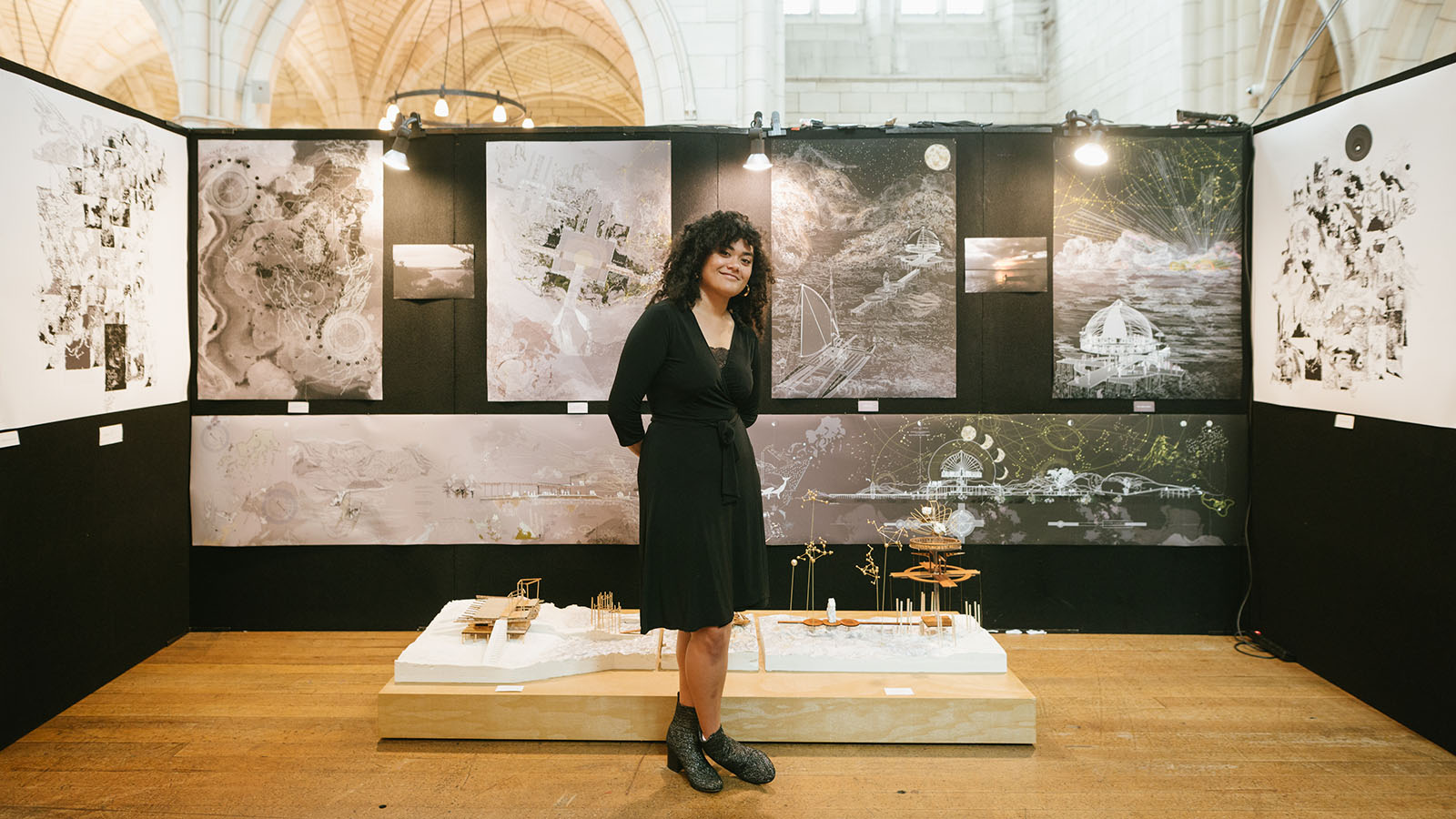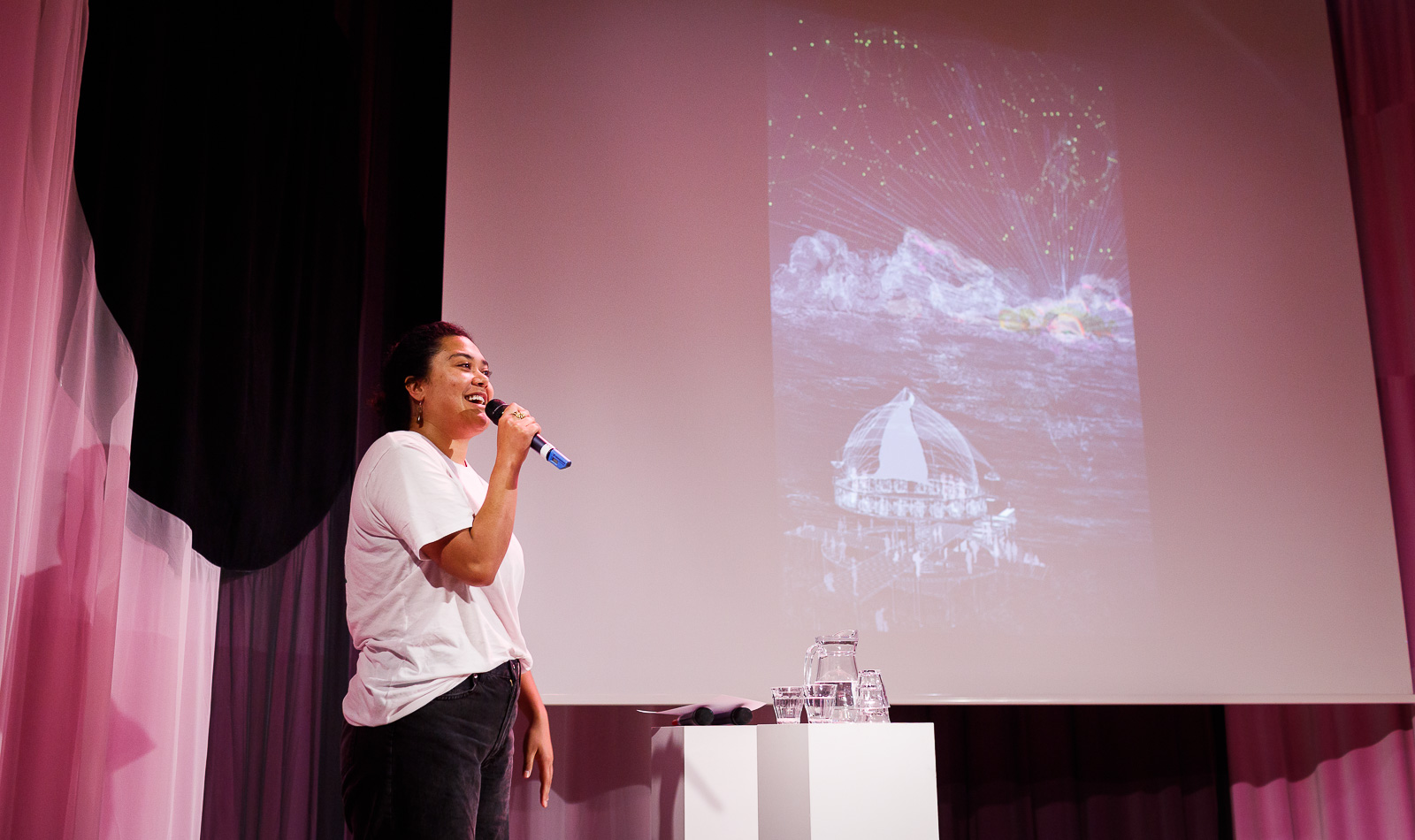Archiprix International, now in its third decade, is a biennial event that invites universities from across the world to submit their best graduate projects.

This year, of the 359 reviewed by an independent jury in Rotterdam, Icao Tiseli was among the six winners announced on 2 December 2023. Her work, Mapping the Feke, submitted by Waipapa Taumata Rau, The University of Auckland, Te Pare School of Architecture and Planning, is concerned with the stories of the invisible few, the everyday people of the Pacific. Icao, an associate at Jasmax, describes her submission as a love letter to the islands.
Icao was in Rotterdam to receive her award and attend a series of Archiprix delegate workshops, which align with a different theme each year. This year’s international cohort was invited to collaborate on ‘Rebuild Ukraine’, resolving water-management issues in the war-torn country. Icao discusses her Archiprix experiences here.
Your recent win is a significant accomplishment, but it came as a surprise. Why?
I did not for the longest time see the impact of my work. It’s a small, very small, and simple project. Over there [Northern Hemisphere], everyone is solving a lot – the scale is big – and I didn't quite know what people saw in it until I heard the citation.
Tell us about the moment you found out you won.
It was so unexpected. The winners somewhat knew they were going to win, and they were all wearing formal clothes. I wore a Scrumpy apple cider t-shirt, and my first thought was what my mum, who’s a traditional Tongan lady, would think when she saw what I was wearing.
Mapping the Feke was submitted into the 2018 Student Design Awards. How do you view your project now?
It still means the same thing to me; it just has a couple more eyes on it now. I’m touched by how much it resonates with people – never in my wildest dreams did I think it would have an impact in this way. In architecture school, I just chipped away at my work; I don't mean to create a point of difference. Archiprix taught me that I struggle with the idea of being the person behind the pen – I love teamwork more than being the one making all the design decisions.
It also taught me that you can have something simple, obscure, distant and difficult, but if it's backed by depth and meaning, it will be received because design is a language. It showed me that any barriers can be removed if you embed good intentions and meaning into your work. I think there is room and space for soul and heart in the industry and in our practice.
What were your expectations of the event?
I talked to Sarosh [Mulla] and Norman [Wei], who had attended in the past, and were somewhat transformed afterwards. It settled something in them – Sarosh came back and pursued his PhD and Norman came back and knew exactly what he wanted to do in architecture.
What was their advice to you?
Norman said ‘Just go as a blank page, don’t overthink it. Just give everything a good try and be open to the experience’. So, I went in with zero expectations – the blank page was truly a blank page. It was helpful advice. Coming from all the way down here, I felt like a very small fish.
Tell us about the workshops and this year’s theme, ‘Rebuild Ukraine’.
With the war in Ukraine ongoing, I didn't know how the brief would be handled sensitively, but they did a fantastic job. Each group had a Ukrainian representative, tutor or participants. We had three Ukrainian colleagues working alongside us, directing us on what is true, what's not, what's useful, what's not. That rigour really informed our proposals, but also supported the capacity for us to have a speculative output.
The premise was to work together, to collaborate and problem solve and do all the wonderful things we do in architecture but bring them together in a condensed manner. It really bonded us, and I now have friends from that experience who taught me a lot about being a designer. It was transformative to meet them and hear their insights as a culture and as a people. They're one of the most resilient people I've ever met. I'm still taking it all in.
What do the workshops aim to achieve?
The point was not to necessarily to create resolved work. It was about tracking the thinking and questioning and providing a process or proposal that addresses those conditions and questions. The Ukrainian representatives could then use and disseminate the research, findings and insights.
I think that's what design should be – actively problem solving together and creating solutions, resolutions or speculations. And you've got to remember to ask better questions so that you can have better answers. It opened up a sense of the responsibility we have as designers to support and care for our communities.
What did you gain from being in an international environment?
There's so much untapped depth at our end, in my opinion, that I just think, oh my gosh, the world should hear about our bicultural methodologies, our experiences with water, the reclaiming of culture. The idea that we are setting precedents is so encouraging and I’m proud that we're all trying our best and doing really good work here.
Who has been instrumental in your project, it being submitted and winning? Mike Austin was my supervisor and Jeremy Treadwell was my second supervisor. Those two really believed in me, and they still do. It's in their presence that I felt I could just be myself as a designer. I didn't need to try to do this or that, which resulted in a lot of bold moves and probably some low grades, but I just didn't see those risks in bad ways. They instilled in me to trust your gut.
How do you think the Archiprix experience will impact your work?
I feel more assured in my ability to be of use in the industry. The projects I'm a part of align with what I align with in life – community. I work on civic, community and education projects. I love working in schools because you see the direct and positive impact. Civic and community have my heart because it's the first form of architecture that transformed me when I came from the islands. I was gobsmacked that you could go to a museum or art gallery that was so free and have access to artwork and its beauty – and that all walks of lives cross those spaces. It really impacted me.

Archiprix International – Jury citation
Mapping the Feke by Icao Tiseli
Waipapa Taumata Rau, The University of Auckland, Te Pare School of Architecture and Planning
‘A highly conceptual project and, at the same time, a political statement. The celebration of indigenous knowledge also amounts to a questioning of the Cartesian world view. The project narrates a cosmological journey based on indigenous Tongan culture and provides an ontological understanding with architecture as a processual spatial framework for continuous observation and learning.’ The Jury



